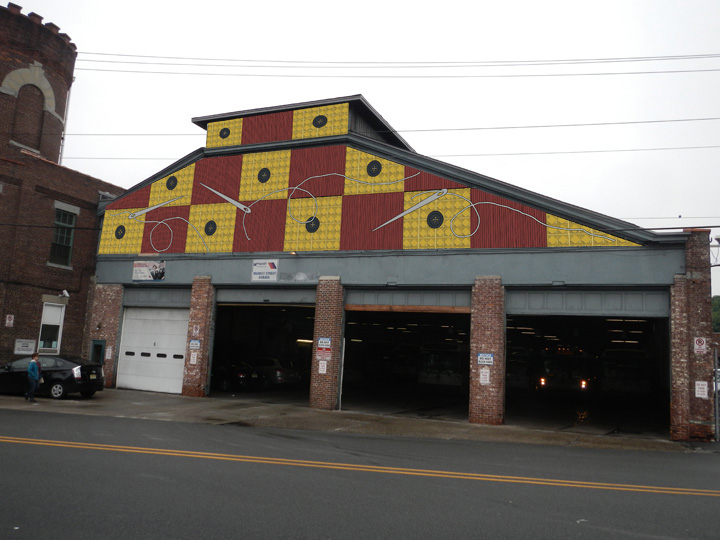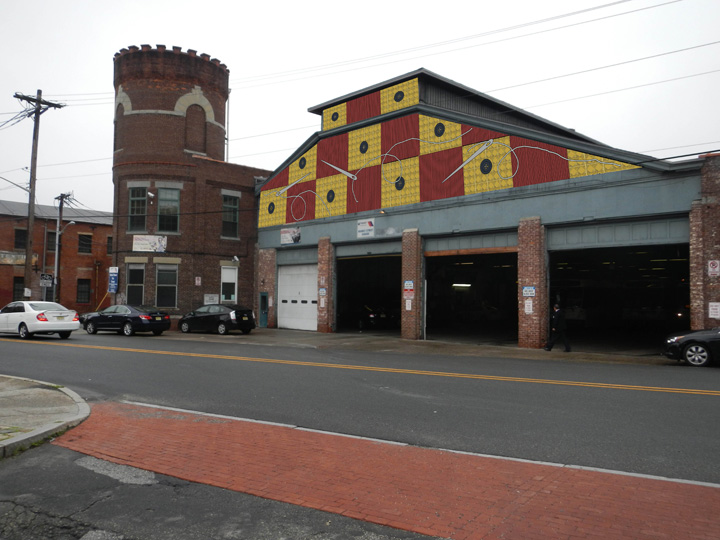STITCHES THROUGH TIME
NJ TRANSIT BUS GARAGE FACADE, PATERSON, NJ
This proposal was designed to py homage to Paterson’s fiber industry and to the folks who thrived and struggled in the industry.
By making a giant “quilt” we aimed to honor the makers and that which was made. The dictionary defines the word quilt as
“a warm bed covering made of padding enclosed between layers of fabric and kept in place by lines of stitching, typically applied in a decorative design”.
This quilt was to be made of roofing material, tin ceiling tiles, and polyethylene buttons “woven” together with armored cable.

SCALE MODEL
“Stitches Through Time” is a low relief collage using industrial and commercial materials to represent a quilt motif being stitched in place.
Comprising the artwork ISa checkered pattern that one might expect to see in textile design.
These checkers consist of 8’ wide sections of corrugated roofing material, brick red in color
alternating with 8’ wide sections of embossed tin ceiling tiles, powder coated yellow ochre.
Attached to the center of the yellow tin tile sections are buttons (polyethylene marine-grade sheets), 2’ in diameter.
10’ long “needles” (1/2” thick aluminum) are arranged over the pattern as if flying above the picture plane.
The needles and the buttons will be “threaded” with flexible stainless steel conduit that also appears to fly above the picture plane.
The movement of the needles and thread acts as a metaphor for piecing parts together during difficult times, including floods, fires and worker strikes.
The under-laying collage represents the great achievements made in the textile industry.
The total work is meant to illustrate the historical thriving of Paterson’s industries and the challenges experienced in those industries throughout the years.

The materials; roofing material, tin ceiling tiles, electrical conduit, sheet metal, etc.,
were chosen for their industrial qualities (for an industrial city) and their inherent beauty.
These materials can be successfully repurposed for this artwork simply and cost effectively.
The brick red color for the corrugated roofing complements the historical brick buildings characteristic of the area.
The yellow ochre goes well with the red and is a common color historically used in the making of textiles.
